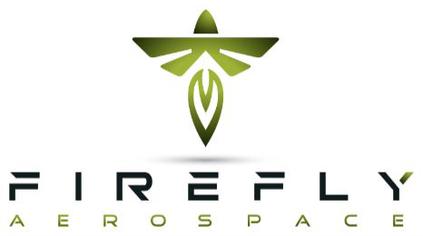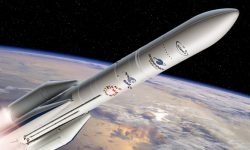
Firefly Aerospace is currently developing a light launcher called Firefly Alpha that could make its first flight in 2020. Firefly Aerospace is also developing a heavier launcher called Firefly Bêta. So far, it was designed as a heavy version of the Alpha, with three boosters glued to the first stage of the space rocket. But there has been a change of plan.
Firefly Bêta must now be a launcher with a simple first stage, without booster, but much more powerful. It will rely on the Aerojet Rocketdyne AR1 engine, which will enable it to achieve good performance by sending 8 tons in low orbit. For Aerojet Rocketdyne, it’s finally the opportunity to send the AR1 into space. This engine was originally designed to equip the ULA Vulcan launcher. Firefly Aerospace and Aerojet Rocketdyne will also collaborate closely on the manufacture of Revear engines that will power the Firefly Alpha launcher.

Firefly Aerospace hopes to launch its first rocket at the beginning of 2020
– News of September 10, 2019 –
In China, there was this summer a lot of launches of light launchers. Hyperbola-1, Jielong-1 and Kuaizhou-1A have all flown in recent days. However, they are less efficient launchers than the Vega launcher. In the occident, in 2020 new companies plan to fly their launcher. Firefly Aerospace, for example, hopes to make its first flight at about the same time as Vega will resume its activities.
The company has already garnered $ 1.3 billion worth of orders and has just done a test of its engine called Reaver. It is a rocket more powerful than the Chinese launchers. This launcher is able to place a payload of 600 kg in sun-synchronous orbit or a ton in low orbit. It should also be relatively price-competitive with an advertised price of $ 15 million per launch.
Firefly Aerospace tests its rocket engine successfully
– News of May 7, 2019 –
Firefly Aerospace has just successfully tested a 300-second test of its Lightning 1 engine. This will allow the company to make a first orbital flight at the end of 2019. The company’s launcher, called Firefly Alpha, is expected to be able to place a ton in low orbit. This is a much higher capacity than Rocket Lab‘s Electron launcher.
The first flight of the Firefly Aerospace launcher will take place in 2019
– News of May 8, 2018 –
An incredible number of companies has been created in recent years to make light launchers. Among these companies, Firefly Space Systems went bankrupt. Founded in 2014, the company started working on the Firefly Alpha launcher. This launcher was promising : FR2 engines on the first floor were designed to run on methane. The Firefly Space Systems solution was a bit special since the first floor was equipped with 12 traditional nozzles but it poured their products of combustion on a specific structure. This was to allow optimal operation at almost all altitudes and a propellant saving of 20% to 30% during the early phases of flight.
Firefly Space Systems would have been the first organization to develop a launcher equipped with this technology. But the company went bankrupt. It appears, however, that the company was launched with new investors. This time, the company’s name is Firefly Aerospace. This name change was accompanied by drastic changes for the Firefly Alpha launcher. The launcher must burn kerosene with conventional nozzles. The capacity of the new launcher has increased : the first version of the Firefly Alpha was to be able to place 400 kilos in low orbit, while the new version will be able to carry a payload of one ton.
Firefly Aerospace has just received approval from the US Air Force to use the Vandenberg base launch pad, currently used by the Delta 2 rocket, which will soon be retiring. The pad will be modified to fire Firefly Alpha launchers. The first flights should arrive quickly even if the engine of the first floor changes strongly. The structure of the launcher is made of carbon fiber and the engine of the second floor are recovered from the previous project, which allows Firefly Aerospace to plan an inaugural flight in the third quarter of 2019. The company hopes to reach quickly a monthly rythm of launches.
The capacity of one ton of Firefly Alpha puts the launcher as a credible competitor to the PSLV, the Indian launcher. The PSLV is a very popular solution for Small Sats’ clustering, a role that Firefly Aerospace would like to have. We have just learned that Arianespace also wants Vega to have this role. The small European launcher will test next year the deployment platform of CubeSat.









